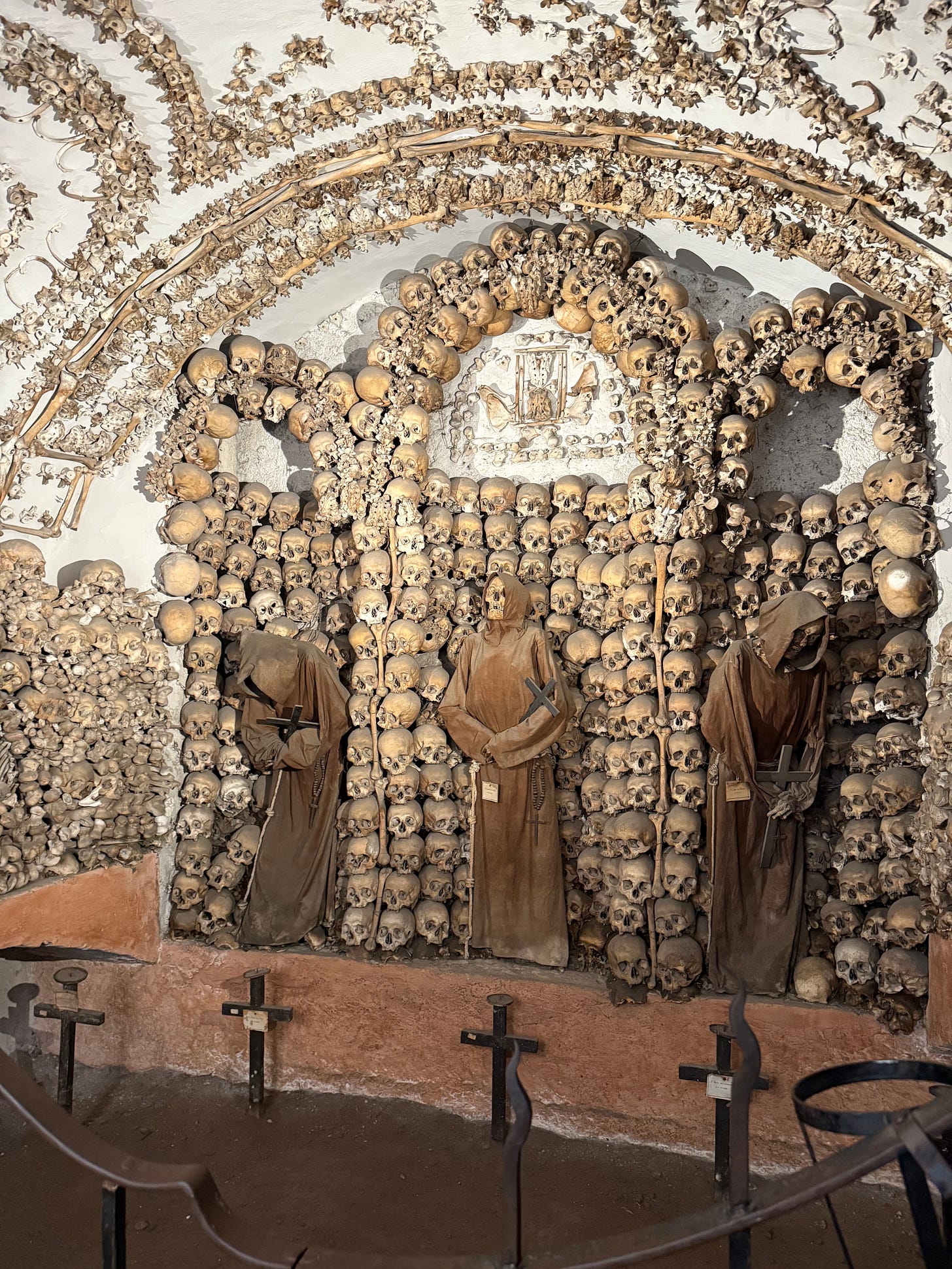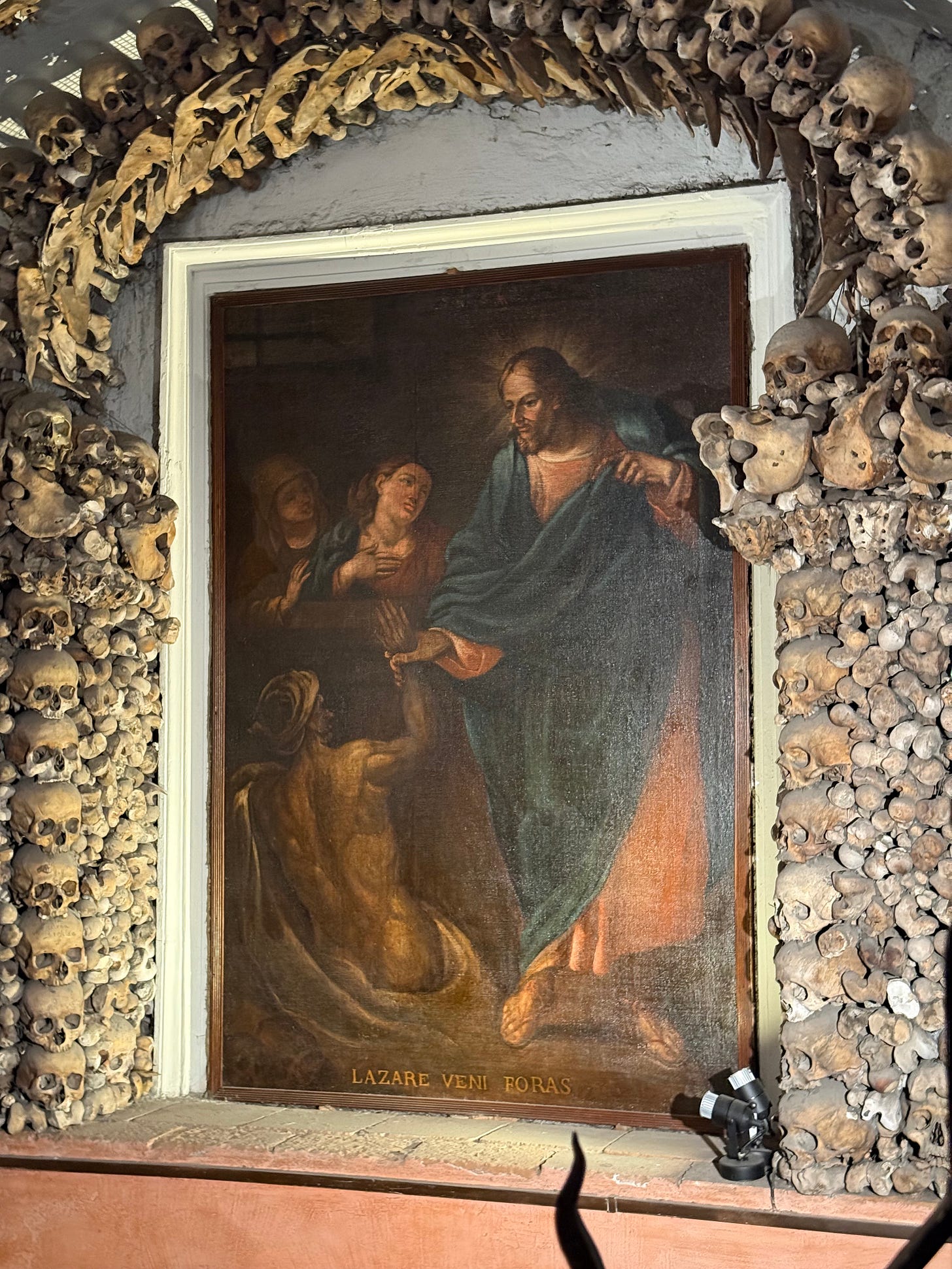All Saints’ Day, the Capuchin Crypt, and the Promise That Death Cannot Break
There is a church in Rome that does not hide from death. It doesn’t cover it with flowers or soften it with marble. It meets death face to face, and dares to speak of hope. The Church of Santa Maria della Concezione dei Cappuccini is its name. And beneath its sanctuary lies one of the most haunting and beautiful places in the city — the Capuchin Crypt.
Step below the altar, and you will find six small chapels, their walls lined with bones. Not stored in coffins. Not hidden behind stone. Laid bare. Carefully arranged. Thousands of skulls, rib bones, vertebrae, and femurs. The remains of Capuchin friars who died between the early 1500s and mid-1800s.
And perhaps the most astonishing thing is this: they are displayed not in horror, but in design — rosettes, arches, chandeliers. They used death to form patterns. They used bones to frame altars. It seems strange to modern minds, even offensive. But if we listen, we’ll hear what they were saying.
They weren’t glorifying death. They were mocking it.
This crypt was filled during some of the darkest seasons of Europe’s history — plague years, famines, political unrest, and war. Disease tore through cities. Children died young. Brothers went to bed healthy and never rose again. The people lived with death always at their doorstep. They saw it in the streets. They buried it in the ground.
And so the friars did something bold. They made death part of the church. They brought it inside the walls and held it up to the light. They did not do it to scare. They did it to proclaim something loud and clear:
Death does not win.
“O death, where is your sting? O grave, where is your victory?” (1 Corinthians 15:55). The Apostle Paul’s words could have been written on every wall of that crypt. Every skull was a sermon. Every bone was a declaration: “You can touch the body, but you cannot take the soul.”
The Capuchins knew that the world had no peace to offer in the face of death. But Christ did. They believed in the resurrection. And they believed that even these dry bones would one day rise at the sound of His voice.
That’s why the last thing you pass before exiting the crypt is the Chapel of the Resurrection. It holds a painting of Christ raising Lazarus from the grave. Death in retreat. Life stepping forward. Hope returning to a hopeless place. That’s the message the friars wanted burned into the heart of every visitor.
And it still speaks.
To some, this place is unsettling. And yes, by today’s standards, it may feel strange. But these men were not fascinated by death. They were overwhelmed by life — eternal life. And they wanted the people of their day to see that even in a world of plagues, loss, and sorrow, death was not the end. It was not final. It was not king.
Only Christ is.
On All Saints’ Day, we remember the faithful — not only the ones who lived peacefully, but the ones who held fast in hard days. The ones who clung to truth in times of chaos. The ones who watched cities fall and yet sang hymns of heaven. Some were buried in chapels. Some in shallow graves. Some in prison cells. But all of them trusted in a kingdom not made with hands.
The crypt beneath the Capuchin church is not just a monument. It’s a mirror. It asks us to consider our own lives. Are we living as if this life is all there is? Or are we living for what cannot be taken — for what outlasts death?
Religious liberty was tested in their time. Faith was often challenged, suppressed, and scorned. But these friars did not back down. They didn’t fear death, and they didn’t trade away their convictions for safety. They lived what they believed — and they died with hope.
So today, remember this: we live in a world still full of death. But the message of Christ has not changed.
Bones will rise. Graves will open. Hope is not buried. It is alive.
Let the bones remind you to number your days. Let the chapel remind you of the life to come. And let the lives of the saints remind you to stand firm — whether in ease or in trial.
Because the One who raised Lazarus will raise us too.
And death will have no more to say.




